Unveiling the Versatility of Flat Roof Designs
Introduction
Importance of Roof Designs in Modern Architecture
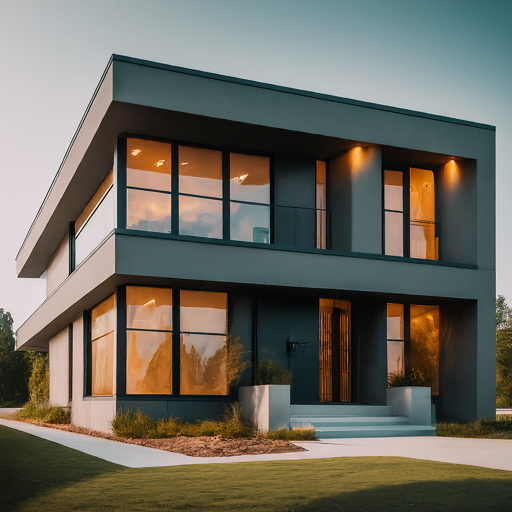
Modern architecture is characterized by its emphasis on clean lines, functionality, and innovative use of materials. The roof, a crucial element of any building, plays a significant role in shaping a structure’s aesthetics and overall design. Well-designed roofs can:
- Complement the Architectural Style: A roof’s form, pitch, and materials can accentuate the building’s overall aesthetic. For instance, a flat roof creates a sleek, contemporary look, while a pitched roof with natural slate tiles complements a rustic or traditional style.
- Enhance Functionality: Roofs play a vital role in protecting the building’s interior from the elements. The design of the roof should consider factors like weatherproofing, drainage, and energy efficiency. Modern roof designs often incorporate technologies like skylights for natural light or green roofs for insulation and rainwater management.
- Maximize Space: Roofs can be utilized for additional purposes, such as rooftop gardens, terraces, or even solar panels.
Overview of Flat Roof Structures
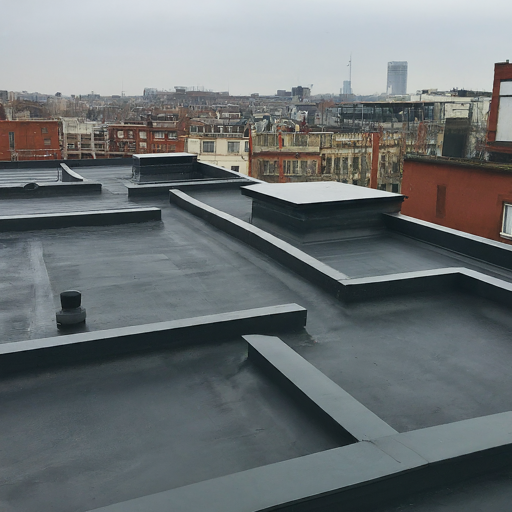
Flat roofs, also known as low-slope roofs, have a pitch of 10 degrees or less. While less common in some regions due to weather considerations, flat roofs offer a distinct aesthetic and several advantages in modern architecture:
- Clean Lines and Modern Aesthetic: Flat roofs contribute to a sleek, minimalist look, often associated with contemporary architecture.
- Usable Space: Flat roofs can be utilized as functional extensions of the building’s interior space. They can be transformed into rooftop gardens, terraces, or recreational areas.
- Structural Efficiency: Flat roofs can be easier and faster to construct compared to complex pitched roofs, especially for larger buildings.
- Design Flexibility: Flat roofs offer greater design freedom for architects to incorporate elements like skylights, solar panels, or architectural features.
However, flat roofs also have some drawbacks that need to be addressed in the design phase:
- Drainage: Flat roofs require a well-designed drainage system to prevent water pooling and potential leaks.
- Maintenance: Flat roofs may require more frequent maintenance compared to pitched roofs, as debris accumulation and proper drainage need to be monitored.
- Climate Considerations: Flat roofs may not be ideal for areas with heavy snowfall or frequent rain due to potential water accumulation issues.
The following sections will delve deeper into the specifics of flat roof structures, exploring their construction methods, materials, and various applications in modern architecture.
Understanding Flat Roof Designs
Definition and Characteristics of Flat Roofs
Flat roofs, also known as low-slope roofs, have a pitch of 10 degrees or less. Unlike pitched roofs that rely on gravity to shed water, flat roofs require a well-designed drainage system to prevent water pooling and potential leaks. Flat roofs are typically constructed with several layers:
- Structural Deck: This forms the base of the roof and can be made of concrete, steel, or wood.
- Vapor Barrier: This layer prevents moisture from entering the building and damaging the insulation.
- Insulation: This layer helps regulate the building’s temperature and can be made from various materials like rigid foam boards or spray foam.
Waterproofing Membrane: This is the topmost layer that protects the roof from water intrusion. Common types of membranes include Membrane roofs (e.g., modified bitumen, TPO, PVC) and liquid roofing (acrylic, polyurethane) are both popular choices for waterproofing flat roofs. Membrane roofs offer ease of installation and durability, while liquid roofing provides a seamless, monolithic finish that excels on irregular shapes.
Historical Evolution of Flat Roofing
Flat roofs have a long history, dating back to ancient civilizations in Mesopotamia and the Indus Valley. They were a practical choice for hot, dry climates where rain was scarce. Early flat roofs were often constructed from mud, palm fronds, or clay tiles.
The development of new materials like steel and concrete in the 19th and 20th centuries revolutionized flat roof construction. These materials allowed for larger, more robust flat roofs suitable for commercial and industrial buildings. The popularity of the Bauhaus movement in the early 20th century further accentuated the use of flat roofs in modern architecture due to their emphasis on clean lines and functionality.
Advantages and Challenges of Flat Roof Structures
Flat roofs offer several advantages for modern buildings.
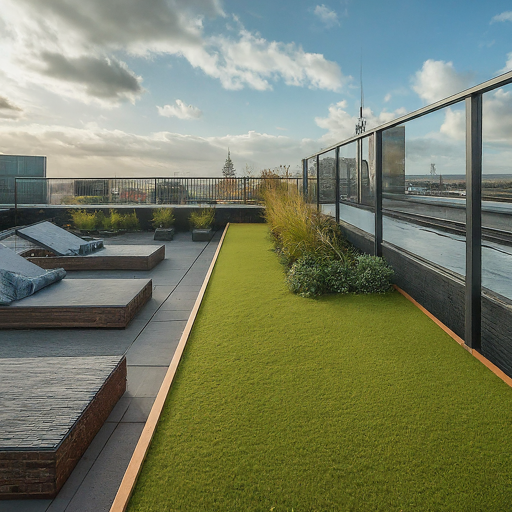
- Usable Space: Flat roofs can be transformed into functional extensions of the building’s interior space. They can be used for rooftop gardens, terraces, or even solar panel installations.
- Structural Efficiency: Flat roofs can be easier and faster to construct compared to complex pitched roofs, especially for larger buildings. This translates to lower construction costs and faster project completion times.
- Design Flexibility: Flat roofs offer greater design freedom for architects to incorporate elements like skylights, solar panels, or architectural features that may be difficult to integrate with pitched roofs.
- Energy Efficiency: Well-insulated flat roofs can contribute to improved energy efficiency by reducing heat gain in summer and heat loss in winter. Green roofs, a type of flat roof with a layer of vegetation, can further enhance energy efficiency by providing additional insulation and reducing the urban heat island effect.
However, flat roofs also have some challenges that need to be addressed in the design phase:
- Drainage: As mentioned earlier, flat roofs require a well-designed drainage system to prevent water pooling and potential leaks. This system may involve internal drains, scuppers (outlets at the edge of the roof), or a combination of both.
- Maintenance: Flat roofs may require more frequent maintenance compared to pitched roofs. Since water doesn’t shed naturally, debris accumulation and proper drainage need to be monitored regularly to prevent issues. Both membrane roofs and liquid roofs benefit from regular inspections to identify any problems and ensure long-term performance.
- Climate Considerations: Flat roofs may not be ideal for areas with heavy snowfall or frequent rain due to potential water accumulation issues. The design of the drainage system needs to take into account the expected snowfall or rainfall for the specific location.
Exploring Flat Roof Insulation Techniques
Importance of Insulation in Flat Roof Design
Proper insulation is crucial for flat roof design for several reasons.
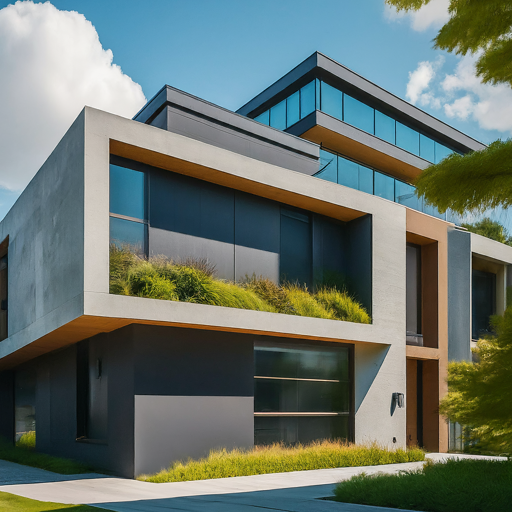
- Energy Efficiency: A well-insulated flat roof significantly reduces heat transfer, keeping your building cooler in summer and warmer in winter. This translates to lower energy bills and a more comfortable indoor environment.
- Reduced Thermal Bridging: Flat roofs are more susceptible to thermal bridging, where heat or cold can transfer through elements like beams or fasteners. Insulation minimizes this heat transfer, improving overall energy performance.
- Moisture Control: Insulation helps control condensation within the roof assembly, which can damage the roof structure and promote mold growth. A vapor barrier is also typically installed below the insulation to prevent moisture from entering the roof from the interior.
Types of Insulation Materials for Flat Roofs
Choosing the right insulation material for your flat roof depends on factors like budget, desired R-value (thermal resistance), and compatibility with other roof components. Here are some popular options

- Rigid Board Insulation: This is a common choice, made from materials like polyisocyanurate (iso), extruded polystyrene (XPS), or mineral wool. Rigid boards offer good thermal performance, are relatively easy to install, and come in various thicknesses to achieve the desired R-value.
- Sprayed Polyurethane Foam (SPF): This closed-cell foam is applied directly to the roof deck, creating a seamless and lightweight insulating layer. SPF offers excellent thermal performance and good adhesion to the roof deck, but requires professional installation.
Installation Methods and Considerations
There are two main approaches to installing insulation in flat roofs:
- Warm Roof System: This method places the insulation above the roof deck, with the waterproofing membrane on top. This is the most common approach and offers several advantages, including better condensation control and protection of the insulation from weather elements. Roof underlayment, a water-resistant barrier placed between the insulation and the waterproofing membrane, provides an additional layer of protection against leaks.
- Cold Roof System: In this method, the insulation is installed below the roof deck, typically between the roof joists. This approach can be less expensive but is more prone to condensation issues if not properly ventilated. A ventilated cold roof system incorporates air channels between the insulation and the underside of the roof deck to allow moisture to escape and prevent condensation buildup.
- Green roofs are a unique application that utilize a layer of vegetation planted on top of the flat roof. The vegetation layer itself acts as an additional insulation layer, further enhancing the energy efficiency of the roof. However, green roofs require a specially designed and reinforced roof structure to support the weight of the soil and plants.
Here are some additional factors to consider when installing flat roof insulation:
- Slope: Even flat roofs require a slight pitch (around 2-3 degrees) to ensure proper drainage. The insulation should be installed with a taper to match this slope.
- Fasteners: Choose fasteners appropriate for the insulation material and roof deck to ensure a secure and long-lasting installation.
- Fire Safety: Select insulation materials that meet relevant fire safety codes for your building type.
Innovative Applications of Flat Roof Designs
Flat roofs, once primarily associated with commercial buildings, are gaining popularity in modern residential architecture. Their clean lines and minimalist aesthetic complement contemporary design styles, while also offering unique functional benefits.
Residential Uses of Flat Roofs
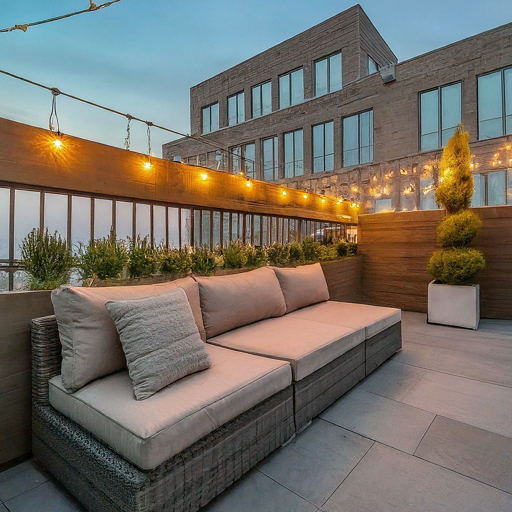
- Usable Rooftop Space: Flat roofs can be transformed into an extension of your living space. They can be used for rooftop gardens, creating a tranquil urban oasis. Imagine entertaining guests on a rooftop patio or enjoying a morning coffee amidst a flourishing herb garden, all within the comfort of your home.
- Sustainable Features: Flat roofs are ideal for incorporating green roofs, which provide environmental benefits like stormwater management, habitat creation for pollinators, and improved building insulation. A well-designed green roof can even extend the lifespan of the underlying roof waterproofing membrane by protecting it from UV rays and extreme temperatures.
- Modern Aesthetics: Flat roofs contribute to a sleek and modern architectural style, often sought after in contemporary residential projects.
Commercial and Industrial Applications
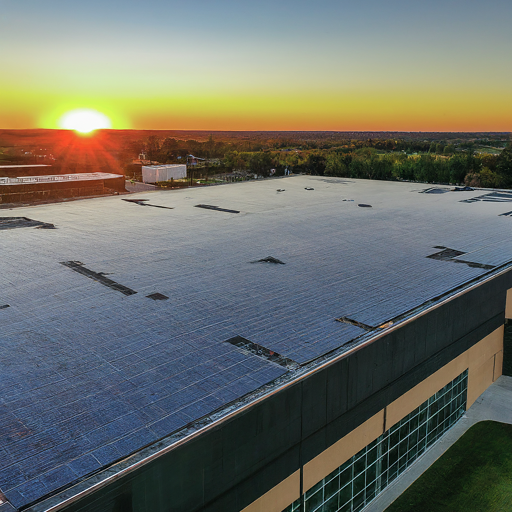
Flat roofs remain a dominant choice for commercial and industrial buildings due to several advantages:
- Cost-Effectiveness: Flat roofs are generally less expensive to construct compared to complex pitched roofs, especially for large buildings. This translates to lower construction costs for building owners and developers.
- Usable Space: Similar to residential applications, commercial flat roofs can be utilized for rooftop gardens, amenity areas for employees, or even additional mechanical equipment space.
- Structural Efficiency: Flat roofs require less structural support compared to pitched roofs, which can be advantageous for large open-plan commercial spaces.
- Solar Power Potential: The expansive surface area of flat roofs makes them ideal for installing solar panels, contributing to renewable energy generation and sustainable building practices.
Green Roof Initiatives and Sustainability Benefits
Green roofs are not just aesthetically pleasing additions to flat roofs; they offer a multitude of environmental and economic benefits:
- Stormwater Management: Green roofs absorb rainwater and slowly release it, reducing the burden on storm drains and mitigating the risk of flooding.
- Improved Air Quality: Green roofs act as natural air filters, absorbing pollutants and reducing greenhouse gas emissions.
- Urban Heat Island Reduction: Vegetation on green roofs helps regulate building temperatures and reduces the urban heat island effect, contributing to a more comfortable urban environment.
- Extended Roof Lifespan: Green roofs protect the underlying roof waterproofing membrane from UV rays and extreme temperatures, potentially extending its lifespan.
Incorporating roof coverboards like rigid insulation or lightweight concrete can provide a stable base for the green roof assembly, while a roof ice & water shield installed beneath the waterproofing membrane adds an extra layer of protection against water infiltration in areas prone to freezing temperatures.
Conclusion
Flat roofs offer a distinct aesthetic and numerous advantages for modern architecture. They can create usable space, enhance structural efficiency, and provide design flexibility. However, careful consideration of drainage, maintenance, and climate is crucial for their success.
Here’s a quick recap:
- Advantages: Usable space, structural efficiency, design flexibility, energy efficiency (with proper insulation).
- Considerations: Drainage, maintenance, climate (snowfall, rainfall).
- Applications: Residential (rooftop gardens, modern aesthetic), Commercial (cost-effective, usable space, solar potential), Green roofs (stormwater management, air quality, urban heat reduction, extended roof life).
By understanding the design principles, construction methods, and innovative applications of flat roofs, architects and builders can create high-performing and sustainable structures that blend seamlessly into the modern landscape.
